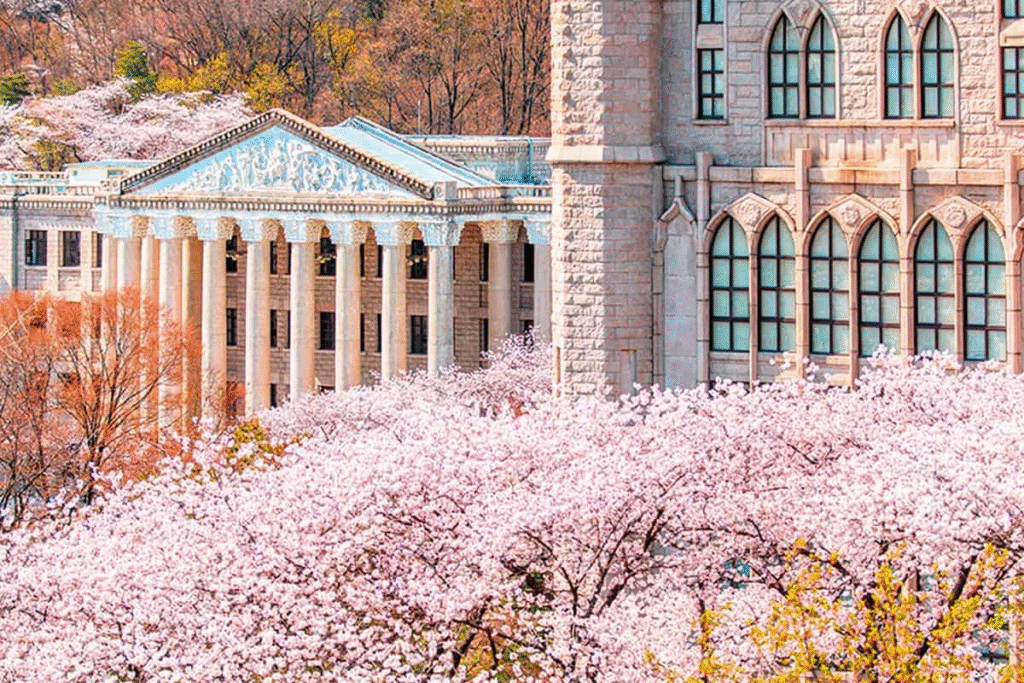If you’re planning to study in Korea as an exchange student, it’s helpful to know how the academic year works. Unlike many Western countries that start in September, Korean universities begin their first semester in March and the second semester in September. Here’s what a typical year looks like on campus.
March (3월)
The spring semester begins, and campus life bursts into energy.
New students arrive, orientation events take place, and student clubs (동아리) actively recruit new members. It’s one of the most exciting times of the year to experience Korean university culture.
April (4월)
This is midterm exam season for most universities.
Interestingly, it often overlaps with cherry blossom season, which makes students a little sad — they can see the pink flowers only briefly between study sessions!

May (5월)
A month of university festivals.
Many campuses host outdoor concerts, food booths, and celebrity performances. It’s a great time to meet friends, relax, and enjoy the liveliest side of Korean campus life.
June (6월)
Final exams mark the end of the semester.
After the exams, students begin their long-awaited summer vacation.
July–August (7월–8월)
Summer break.
Most students travel or work part-time, but universities also offer summer sessions (계절학기) in July for those who want to earn extra credits or retake classes.
September (9월)
The fall semester begins.
Although not as hectic as March, student clubs and academic societies still recruit new members, and the campus regains its busy atmosphere after the summer.
October (10월)
It’s midterm season again, and autumn colors fill the campus.
After exams, many universities organize sports festivals or athletic meets, reflecting Korea’s traditional custom of holding community sports events in the fall.
It’s a lively time filled with team games, cheering, and outdoor activities that strengthen campus spirit.
November–December (11월–12월)
Final exam period usually runs from late November to early December, marking the close of the second semester. After exams, campuses become quiet as students prepare for winter vacation.
January–February (1월–2월)
Winter break.
January often includes winter session courses, while February is graduation season — a time of ceremonies, farewells, and new beginnings.
Tip: Korean universities usually publish their academic calendars 6–12 months in advance, so be sure to check your host university’s website before planning travel or exchange activities.
Leave a Reply